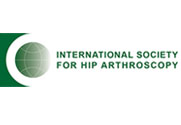Anterior Hip Replacement

Anterior Hip Replacement is a minimally invasive hip surgery to replace the hip joint without cutting through any muscles. The surgical procedure involves a small incision in front of the hip, anterior, as opposed to an incision on the side or back of the hip. It is referred to as a muscle sparing surgery, because no muscles are cut to access the hip joint, enabling a quicker return to normal activity.
In order to understand anterior hip replacement and its benefits over traditional hip surgery, it is important to understand the normal anatomy of the hip.
- Normal Hip Anatomy
- Arthritic Hip
- Surgical Procedure
Normal Anatomy
The thigh bone, femur, and the pelvis, acetabulum, join to form the hip joint. The hip joint is a “ball and socket” joint. The “ball” is the head of the femur, or thigh bone, and the “socket” is the cup shaped acetabulum.
The joint surface is covered by a smooth articular surface that allows pain free movement in the joint.
The cartilage cushions the joint and allows the bones to move on each other with smooth movements. This cartilage does not show up on X-ray, therefore you can see a “joint space” between the femoral head and acetabular socket.
Pelvis
The pelvis is a large, flattened, irregularly shaped bone, constricted in the center and expanded above and below. It consists of three parts: the ilium, ischium, and pubis.
The socket, acetabulum, is situated on the outer surface of the bone and joins to the head of the femur to form the hip joint.
Femur
The femur is the longest bone in the skeleton. It joins to the pelvis, acetabulum, to form the hip joint.
The upper part is composed of the femoral head, femoral neck, and greater and lesser trochanters.
What is arthritis?
Arthritis is a general term covering numerous conditions where the joint surface (cartilage) wears out.
The joint surface is covered by a smooth articular surface that allows pain free movement in the joint. This surface can wear out for a number of reasons; often the definite cause is not known.
When the articular cartilage wears out, the bone ends rub on one another and cause pain.
There are numerous conditions that can cause arthritis and often the exact cause is not known. In general, but not always, it affects people as they get older and is called Osteoarthritis.
Other causes include:
- Childhood disorders such as a dislocated hip, Perthe’s disease, or slipped epiphysis
- Growth abnormalities of the hip, such as a shallow socket, may lead to premature arthritis
- Trauma (fracture)
- Increased stress from overuse
- Avascular necrosis (loss of blood supply)
- Infection
- Connective tissue disorders
- Obesity- the additional weight puts extra force through your joints which can lead to arthritis over a period of time
- Inflammation such as in Rheumatoid arthritis
In an arthritic hip:
- The cartilage lining is thinner than normal or completely absent. The degree of cartilage damage and inflammation varies with the type and stage of arthritis.
- The capsule of the arthritic hip is swollen
- The joint space is narrowed and irregular in outline; this can be seen in an X-ray image.
- Bone spurs or excessive bone can also build up around the edges of the joint.
The combinations of these factors make the arthritic hip stiff and limit activities due to pain or fatigue.
Diagnoses
Hip conditions should be evaluated by an Orthopaedic surgeon for proper diagnosis and treatment.
Your surgeon will review your medical history and perform a physical examination.
- Diagnostic studies may include:
- X-rays: a form of electromagnetic radiation that is used to take pictures of bones.
There is no blood test to diagnose osteoarthritis.
Surgical Introduction
Anterior Hip Replacement is a minimally invasive, muscle sparing surgery using an alternative approach to traditional hip replacement surgery. Traditionally, the surgeon makes the hip incision laterally, on the side of the hip, or posteriorly, at the back of the hip. Both approaches involve cutting major muscles to access the hip joint. With the anterior approach, the incision is made in front of the hip enabling the surgeon to access the hip joint without cutting any muscles. A special operating table is used that facilitates various anatomical positions enabling the surgeon to replace the hip joint anteriorly.
Potential benefits of anterior hip replacement compared to the traditional hip replacement surgery, may include the following:
- Smaller incision
- Minimal soft tissue trauma
- Reduced post-operative pain
- Less blood loss
- Shorter surgical time
- Faster healing time
- Less scarring
- Earlier mobilization
- Less post-operative restrictions
- Reduced hip dislocations
- Decreased hospital stay
Surgical Procedure
Anterior Hip Replacement is performed in a hospital operating room under general or regional anesthetic depending on you and your surgeon’s preference. You will be placed supine, on your back, on a special operating table that enables the surgeon to perform your hip replacement anteriorly. Fluoroscopic imaging is used during the surgery to ensure accuracy of component positioning and to minimize leg length inequality.
The surgeon makes one incision to the front of the hip, about 4 inches long. The surgeon then pushes the muscles aside to access the hip joint to begin the replacement. At no time during the surgery are any muscles cut.
The femur (thigh bone) is separated from the acetabulum (hipbone socket).The acetabulum (socket) is prepared using a special instrument called a reamer. The acetabular component is then inserted into the socket. This is sometimes reinforced with screws or occasionally cemented.
A liner, which can be made of plastic, metal or ceramic material, is then placed inside the acetabular component. The femur (thigh bone) is then prepared. The femoral head which is arthritic is cut off and the bone prepared using special instruments to exactly fit the new metal femoral component.
The femoral component is then inserted into the femur. This may be press fit relying on bone to grow into it or cemented depending on a number of factors such as bone quality and surgeon’s preference. The real femoral head component is then placed on the femoral stem. This can be made of metal or ceramic. The artificial components are fixed in place.
The surgeon withdraws the instruments and sutures the incision closed. The incision is then covered with a sterile dressing.
Post-Operative Care
After surgery, your surgeon will give you guidelines to follow. It is important that you follow your surgeon's instructions for a safe and successful outcome.
Normally, after a traditional hip replacement, your surgeon would give you instructions on hip precautions to prevent dislocating the new joint. Hip precautions are very restrictive and usually include the following:
- Avoid the combined movement of bending your hip and turning in your foot.
- You should sleep with a pillow between your legs for 6 weeks.
- Avoid crossing your legs and bending your hip past a right angle.
- Avoid low chairs.
- Avoid bending over to pick up things. Grabbers are helpful as are shoe horns or slip on shoes.
- An elevated toilet seat should be used.
For Anterior Hip Replacement patients, however, hip precautions are unnecessary. Because the muscles are not cut, the risk of dislocation is greatly lessened enabling the patient much more freedom of movement after surgery. Rehabilitation is much faster for patients as well due to less muscle trauma during the surgery.
Common post-operative guidelines after Anterior Hip Replacement include the following:
- You may bend your hip immediately after surgery and bear full weight when comfortable.
- Your surgeon will prescribe pain medications to keep you comfortable at home.
- Keep the incision clean and dry. You may shower once the dressings are removed unless otherwise directed by your surgeon.
- You will be given specific instructions regarding activity and rehabilitation. You will not have to follow standard hip precautions.
- Physical therapy will be ordered to restore normal hip function and strength.
- If you have increasing redness or swelling in the wound or temperatures over 100.5Ëš you should call your doctor.
- If you are having any procedures such as dental work or any other surgery, you should take antibiotics before and after to prevent infection in your new prosthesis. Consult your surgeon for details.
- Your hip replacement may go off in a metal detector at the airport.
- Eating a healthy diet and not smoking will promote healing.
Risks and Complications
As with any major surgery there are potential risks involved. The decision to proceed with the surgery is made because the advantages of surgery outweigh the potential disadvantages.
It is important that you are informed of these risks before the surgery takes place.
Complications can be medical (general) or specific to hip replacement surgery.
Medical complications include those of the anesthetic and your general well being. Almost any medical condition can occur so this list is not complete. Complications include:
Allergic reactions to medications
Blood loss requiring transfusion with its low risk of disease transmission
Heart attacks, strokes, kidney failure, pneumonia, bladder infections
Complications from nerve blocks such as infection or nerve damage
Serious medical problems can lead to ongoing health concerns, prolonged hospitalization, or occasionally even death.
The majority of patients suffer no complications following Anterior Hip Replacement. However, complications can occur following Hip surgery which include:
- Infection: Infections can occur superficially at the incision site or in the joint space of the hip, a more serious infection.
- Fractures:This is rare but can occur during or after surgery. This may prolong your recovery or require further surgery.
- Nerve damage: Trauma to nerves may be temporary or permanent and can cause numbness, tingling, pain, and weakness.
- Hemarthrosis: A condition caused by excess bleeding into the joint after the surgery is completed. This may require additional surgery to irrigate the joint and evacuate the blood.
- Blood clots (Deep Venous Thrombosis or DVT):DVT can form in the calf muscles and can travel to the lung, a life threatening condition called pulmonary embolism. If you get calf pain or shortness of breath at any stage, you should notify your surgeon.
- Leg length inequality: It is very difficult to make the leg exactly the same length as the other. The Anterior approach for Hip Replacement can improve this outcome. However, there are some occasions when it is simply not possible to match the leg lengths. All leg length inequalities can be treated by a simple shoe raise on the shorter side.
- Wound irritation: Your scar can be sensitive or have a surrounding area of numbness. This normally decreases over time and does not lead to any problems with your new joint
- Wear:All joints eventually wear out. The more active you are the quicker this will occur. In general 80-90% of hip replacements survive 15 years.
- Failure to relieve pain:This is rare but may occur especially if some pain is coming from other areas such as the spine.
Risk factors that can negatively affect adequate healing after hip replacement include:
- Poor nutrition
- Smoking
- Obesity
- Age (over 60)
- Alcoholism
- Chronic Illness
- Steroid Use












